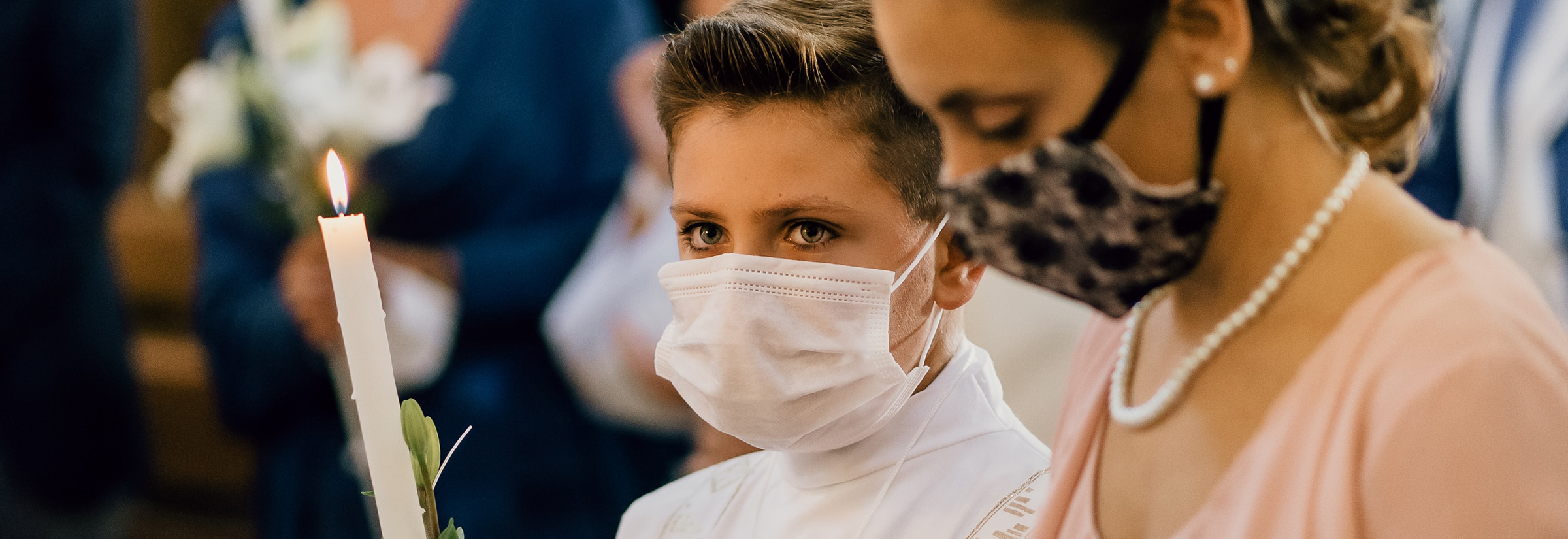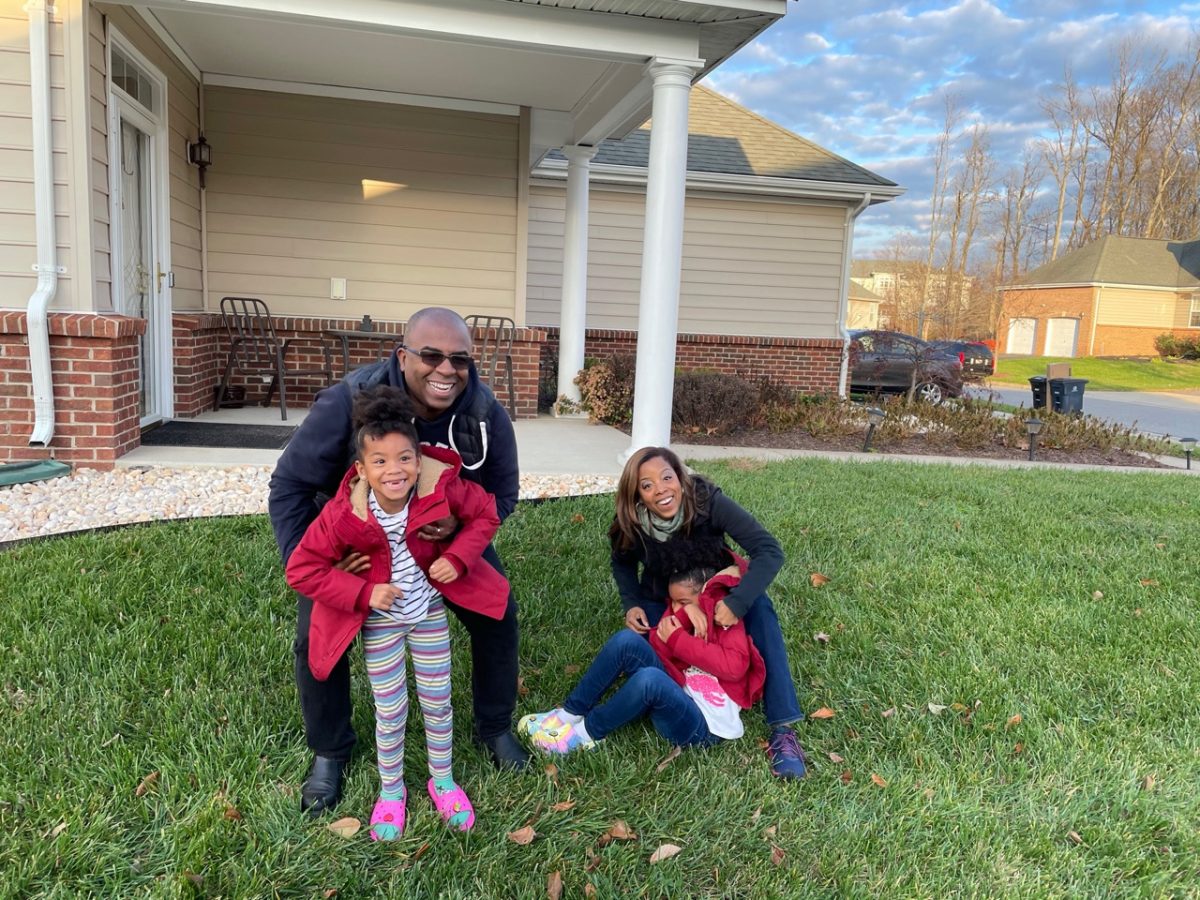
What the Post-COVID Church Could Look Like
There are many changes we’ve had to come to terms with over the past twelve months, but one of the hardest changes has been the loss of communal church worship. Many of us have not stepped foot into our houses of worship in almost a year and it’s unclear when we will be able to again. We asked Nicole Martin, Vice President of Church Engagement and the Executive Director of Trauma Healing at American Bible Society, to share how churches can still foster communal worship among members and what our churches may look like once the pandemic restrictions are lifted.
Don’t have time to read this blog? Listen to it below!
Tell us a little about yourself!
I am a church girl through and through! My father is a pastor so I literally grew up in the church. My grandparents on both sides of the family were deeply committed to serving God and my great-grandparents built the church in their community in Pittsburgh. I can remember my sister and I folding programs at church before the doors opened and cleaning up the pews after they closed. We sang in the choir, served on the usher board, taught Sunday School, served meals from the kitchen and did anything else we needed to do so our church could thrive.
Looking back, I now know God was shaping my story with a heart to serve God’s people in more ways than one. My parents shaped in me a necessity of church as an expression of my relationship with God. For me, church became the core of my calling, leading me to leave corporate America to serve in full-time ministry just a few years after college. I attended seminary and began my ministry career as the Minister of Young Adults and Singles at a church in Charlotte. Today, I have the honor of serving the whole church at American Bible Society. In this capacity, I get to use all of my gifts to serve God’s church with healing and hope. I am also deeply engaged in my local church in Maryland as a discipleship leader, and my husband and I enjoy seeing our little girls serve God in many capacities there as well.
How has your church been affected by the pandemic? Do you feel your quality of worship has changed?
Our church is relatively large (approximately 4,000 members) and we have always had a popular online ministry. Making the shift to being completely online during the pandemic was not as hard as it would have been without these ministries in place. While we have not been able to worship in-person, we have seen growing numbers of worshippers online and have seen larger attendance for Bible studies than we had prior to the pandemic.
One of the elements I miss most is communal worship. During the most challenging times of the quarantine—especially during seasons of personal loss and heightened racial injustice—I found myself longing to be in church just to sing with the congregation. There is something so cathartic about just being with others to lament and grieve, to share faith and inspire hope. However, in the absence of my church community, I have seen God strengthen our family through our version of home church. We watch our pastor online and then have a time of prayer, Scripture, and song with our girls. Everyone in the family has a role and this has allowed us to amplify the quality of worship in our home while we continue to worship virtually with our church.

How can we keep our worship communal when we aren’t able to come together with our church families?
I think there are several important steps we can take to experience communal worship, even when we cannot be physically together. First, we can serve others. One of the greatest communal worship experiences our family has had in this pandemic came from serving food to families in need. Each weekend, our church provides food boxes to hundreds of families who may have lost employment or who suffer more than others. By taking our children to pack and deliver boxes, we experienced the presence of God in collaboration with others. Since there will always be people who have significant needs, there will always be opportunities to worship God by serving others.
Second, we can maximize technology to be close to others in worship. Instead of simply watching a service online, use the chat to type an “Amen!” or simply let others know you are in the room. Start a Bible reading plan online and invite others to join with you and share their thoughts. In our Trauma Healing program, we have seen deep engagement in online healing groups when we invite others to share in small breakout groups and get to know others in more intimate ways. While it may be tempting to just turn on worship and multitask each week, I would encourage all of us to be present when and where we can be online to make the most of communal worship.
Do you think church worship will look different post-pandemic?
I do believe there will be some significant differences in worship after this pandemic. For one, I sincerely believe every church will have to think of ways to honor the space of grief and loss more prominently. So many people have lost loved ones, lost stability, and even lost a sense of identity during this crisis. We’ve had to attend virtual funerals, had to stay home when family members went to the hospital, and had to wrestle with isolation and loneliness in ways that we’ve never had to do before. When we finally come back together, it may feel like a dam that breaks with emotion. We will need to be intentional about creating spaces for people to release the pain, embrace God’s healing, and reclaim their hope in Christ.
In other ways, I’d anticipate that church worship will be similar, but perhaps enhanced with longing. As we have longed to be in communal worship, the Bible teaches us to long for the return of Christ and for the perfecting of all creation. If this pandemic has taught us anything, it’s likely the reality that nothing is promised. We may all get back to worship this year and we may not. Our children may resume school life as before and they may not, at least not in the way we anticipate. But no matter what happens and no matter what else changes, we know for certain that Christ is coming back for us again soon. As a Body of Believers, we long for the coming of our King and remember that this life, whether virtual or in-person, is nothing compared to eternal life with Him. May we learn to wait on God and declare the final words of Scripture: “Amen. Come, Lord Jesus!” (Revelation 22:20b)

Rev. Dr. Nicole Martin is the Vice President of Church Engagement and the Executive Director of Trauma Healing at American Bible Society. She teaches courses at Gordon-Conwell Theological Seminary and serves in ministry at Kingdom Fellowship AME Church in Maryland. Dr. Martin is the author of numerous articles and written two books: Made to Lead: Empowering Women for Ministry and Leaning In, Letting Go: A Lenten Devotional. She serves on the Board of Trustees at of Gordon College, is on the board of the National Association of Evangelicals, and serves as a Catalyst for the Scripture Engagement Network of the Lausanne Movement.
Dr. Martin is married to her best friend, Dr. Mark Martin, and they live in Maryland with their amazing daughters, Addison and Josephine.